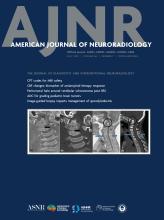Case of the Month
Section Editor: Nicholas Stence, MD
Children's Hospital Colorado, Aurora, CO
April 2017
Next Case of the Month coming May 9 …
Unilateral Moyamoya Syndrome
- Background:
- The term “Moyamoya” is used for an extremely heterogenous and loosely defined set of intracranial vascular disorders.
- Classic definition of Moyamoya is:
- Progressive stenosis/occlusion of bilateral ICA termini
- AND development of multiple lenticulostriate and thalamoperforator collaterals (“puff of smoke” or “smokelike”)
- However, the term “Moyamoya” is often applied to unilateral disease and stenosis/occlusion without collaterals.
- Some use Moyamoya syndrome when underlying cause is known and Moyamoya disease for idiopathic, bilateral type with collaterals, which is more often seen in Asian populations.
- A recently proposed CASCADE system for classification of pediatric arterial ischemic stroke would categorize this case as “unilateral focal cerebral arteriopathy of childhood, anterior circulation with collaterals.”
- Moyamoya has been associated with several gene mutations, infections (EBV), radiotherapy, NF1, and Down syndrome (26-fold higher incidence).
- 70% present before age 20, while 50% present before age 10.
- Clinical Presentation:
- Children most often present with TIAs, headaches, and seizures.
- Adults more often present precipitously after lenticulostriate/basal ganglia hemorrhage.
- Key Diagnostic Features:
- multifocal infarcts on NECT head
- absent flow voids on MRI
- significant collateralization from anterior choroidal, P Comm, and leptomeningeal collaterals
- Differential Diagnoses:
- Although imaging is often fairly characteristic, possible differential diagnoses include chronic thrombus, subarachnoid hemorrhage, and meningitis.
- Treatment:
- Treatment is most often ECA-ICA bypass, such as pial synangiosis (EDAS) or dural inversion.











